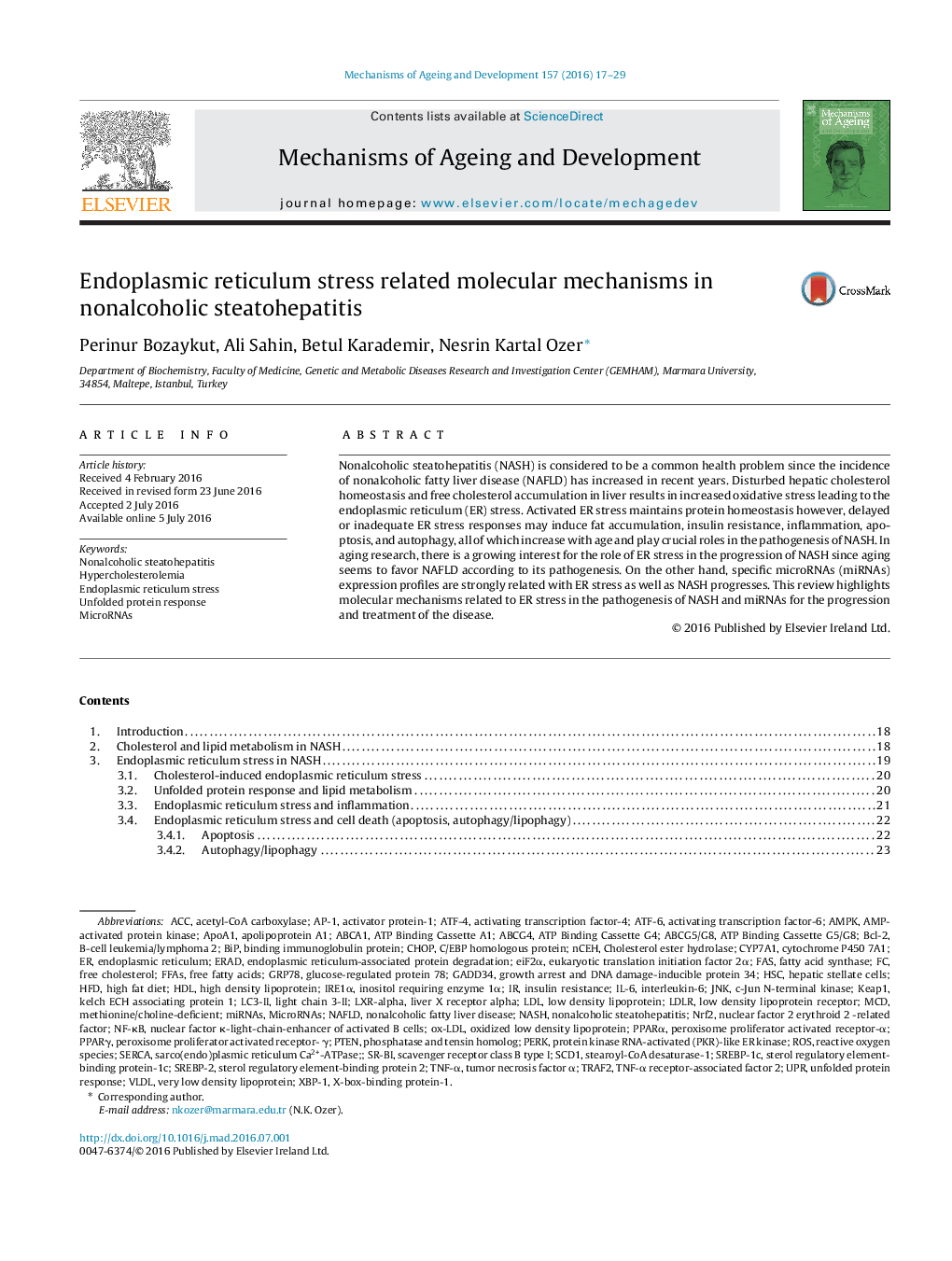| Article ID | Journal | Published Year | Pages | File Type |
|---|---|---|---|---|
| 1919164 | Mechanisms of Ageing and Development | 2016 | 13 Pages |
•In NASH, lipid metabolism is dysregulated by increase of lipogenesis and free cholesterol and by decrease of VLDL production.•Lipid accumulation activates several cellular stress pathways including oxidative stress and ER stress that are linked with each other.•ER stress responses may induce fat accumulation, IR, inflammation, apoptosis/autophagy, all of which play crucial roles in the pathogenesis of NASH.•ER stress and microRNAs act in a bidirectional way.
Nonalcoholic steatohepatitis (NASH) is considered to be a common health problem since the incidence of nonalcoholic fatty liver disease (NAFLD) has increased in recent years. Disturbed hepatic cholesterol homeostasis and free cholesterol accumulation in liver results in increased oxidative stress leading to the endoplasmic reticulum (ER) stress. Activated ER stress maintains protein homeostasis however, delayed or inadequate ER stress responses may induce fat accumulation, insulin resistance, inflammation, apoptosis, and autophagy, all of which increase with age and play crucial roles in the pathogenesis of NASH. In aging research, there is a growing interest for the role of ER stress in the progression of NASH since aging seems to favor NAFLD according to its pathogenesis. On the other hand, specific microRNAs (miRNAs) expression profiles are strongly related with ER stress as well as NASH progresses. This review highlights molecular mechanisms related to ER stress in the pathogenesis of NASH and miRNAs for the progression and treatment of the disease.
Graphical abstractFigure optionsDownload full-size imageDownload as PowerPoint slide
